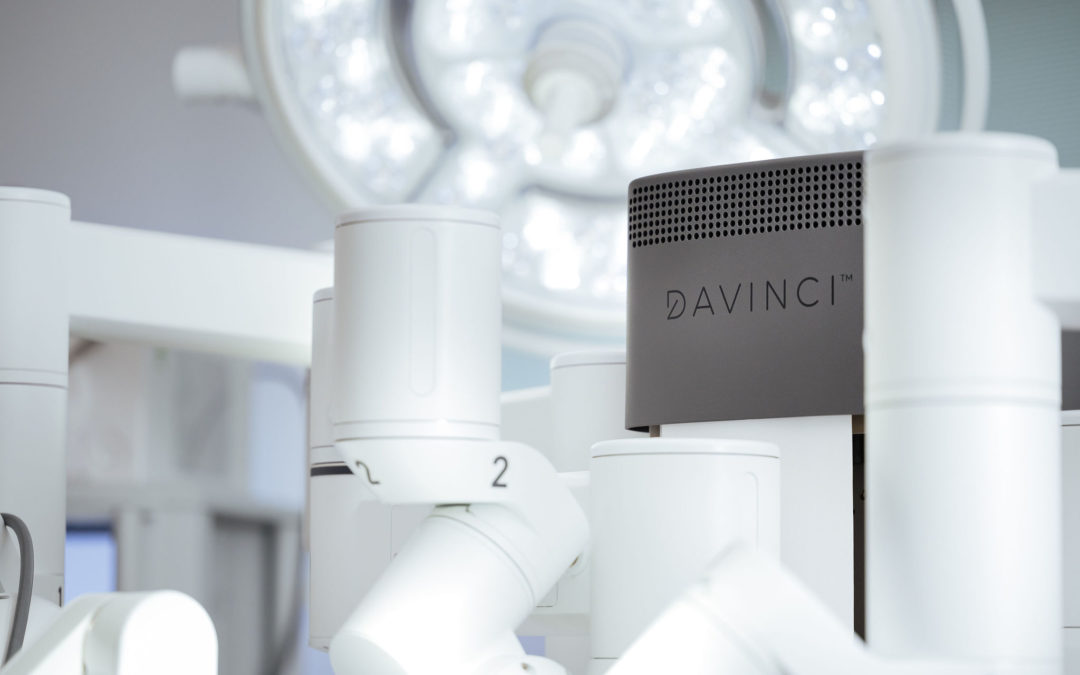1920s
Robotic surgery was still a long way off but the concept of modern robotics began developing in the early 1900s. In 1920, Czech writer Karel Capek published a play called “R.U.R.” which stands for Rossumovi Univerzaini Roboti or translated into English, “Rossum’s Universal Robots.”
This was the first instance of the word “robot” being used in the English language. Capek actually credited the invention of the word “robot” to his brother Karel Capek. They used the Czech word “robota” which means “forced labor,” because, in the play, the robots become a serving class in society. And eventually, they rebel against humans, and that leads to the end of humanity.
1930-1969
During these next few decades, robots were still just a concept but were probably being worked on frequently. Science fiction authors also kept playing with the idea of super-advanced and intelligent robots and how they would interact with humanity. In Frank Herbert’s Dune saga, robots played a role in the near extinction of humanity. In October 1966, the BBC broadcasted a series of episodes of the sci-fi series Doctor Who featuring robotic creatures known as Cybermen.
1970s
During this time period, NASA experimented with the idea of telesurgery, or remote surgery as potential support for astronauts while aboard the space station.
Similarly, the United States Defense Research Advanced Projects Agency researched telesurgery for long-distance battlefield surgery. Some advances were made, but full progress was not achieved until the 2000s.
1980s
The first records of robotic surgery performed date to the 80s. Specifically, the first surgical robot, PUMA 560, was used in a brain biopsy procedure. This procedure took place in 1985 as robotics started to be implemented to reduce movement due to hand tremors.
Then in 1988, the PROBOT, developed at the Imperial College London, was used to make several repetitive incisions during a transurethral prostate surgery.
1990s
At the beginning of the 90s, Integrated Surgical Solutions, Inc. and IBM developed ROBODOC. In 1992, they successfully used ROBODOC to prepare the femur for hip replacement in human subjects.
By the late 90s, engineers had developed three different systems that combined laparoscopic technology with surgical robots. These systems were the da Vinci Surgical System, the AESOP, and the Zeus surgical systems.
2000s
2001 marked the Lindinburg Surgery, which was a major success for telesurgery. Doctors Jacques Marescaux, from France, and Michel Gagner, from Canada, performed a remote gallbladder removal surgery from New York City. The patient was in Strasbourg, France, during the procedure.
However, the long-distance caused time delays from the control unit to the operating site. Even though the latency time during the Lindinburg Procedure was 155 milliseconds, the ideal latency time would be under 100 milliseconds.
From the 90s and into the early 2000s, the Zeus system was used in several unique, or novel, surgeries. Some of the surgeries that were performed using the Zeus system include:
Laparoscopic fallopian tube reanastomosis – 1998
Laparoscopic cardiac revascularization in a closed-chest beating-heart operation -September 1999
The world’s first robotically-assisted closed-chest beating-heart cardiac bypass operation – November 1999
However, the Zeus system was discontinued in 2003 when its creator, Computer Motion, was purchased by Intuitive Surgical. After the merger, Intuitive Surgical favored the development, production, and sales of the da Vinci Surgical System.
2010s
The da Vinci Surgical System has become the most prevalent robotic surgery device in the field. One of the most notable milestones occurred in August 2010 when Edward Hospital used the da Vinci Surgical System to peel the skin off of a grape. Which quickly became an internet meme.
How Does Robot-Assisted Surgery Work?
Currently, surgical robot systems serve to supplement and augment a surgeon’s skills. The main part of the device uses robotic arms fitted with tiny laparoscopic clamps that can be fitted with various tools to aid in the operation of minimally invasive surgical procedures.
The surgeon operates the device from a nearby terminal using precise controls. The controls are designed to mimic the hand movements of the surgeon so even complex procedures can be performed through minimally invasive incisions.
The controls are also programmed to compensate for and filter out any hand tremors from the operating surgeon. The robotic arms are also designed to mimic the functionality of the human wrist, meaning that surgeons can perform complex movements with precision.
What Are Examples Of Robotic Surgery?
Robotic surgery has many applications. Specifically, robotic surgery is often used to make complex procedures easier to perform. Examples of robot-assisted surgical procedures include:
→ Robotic kidney surgery
→ Robotic prostate surgery
→ Robotic colorectal surgery
→ Robotic coronary artery bypass
→ Robot-assisted cancer surgery
→ Robotic cardiac surgery
→ Gallbladder removal
→ Hysterectomy
→ Kidney transplant
→ Kidney removal (total or partial)
→ Single-site robotic gallbladder surgery
→ Head-and-neck surgery
→ Joint replacement surgery
How Is Robotic Surgery Performed?
Robotic surgery is performed much the same as any other surgical procedure. A patient will be brought into the operating room, usually sedated, and then the surgeon will perform the procedure from the control console.
What Are The Benefits Of Robotic-Assisted Surgery?
A robotic surgery system allows surgeons to perform procedures that are usually performed as open operations. This means that patients can recover faster with
Is Robotic Surgery Painful?
Thanks to the minimally invasive nature of robot-assisted surgery, patients actually experience less pain than they would from a traditional procedure. As a patient, you would also face fewer risks from your surgical treatment.
What Are the Most Common Types of Robotic Surgery?
Robotic surgery has many applications, but the most common uses for robotic surgery include:
Urology
Orthopedics
Neurology
Gynecology
Others (neurosurgery, oncology, cardiology, etc)
What Does the Future of Robotic Surgery Look Like?
According to a report from Grand View Research, North America held more than 50.0% of revenue share in terms of global surgical robots. It stands to reason that in 2022 and beyond that the United States will continue to see growth in the implementation and support of robotic surgery.
A Resurgence of Remote Robotic Surgery
Because of the COVID-19 pandemic and resulting worker shortages, it’s possible that remote surgery will be making a comeback. Latency times between the operating surgeon and the remote patient can be improved as 5G networks continue to improve, which can make up for short-staffed hospitals and surgery centers.
More and More Robotics Companies
As the field of robotics grows, more and more companies are experimenting and developing robotic technologies that could be applied to surgery. In 2021, Johnson & Johnson revealed they were working on a surgical system to compete with Intuitive Surgical’s da Vinci system. Other companies continue to make improvements and advancements with their own specialized robotic systems.
Read more in this report from Medical Design & Outsourcing:
12 surgical robotics companies you need to know
Robotic Surgery at The Surgical Clinic
The Surgical Clinic is proud to offer the benefits of robotic surgery to our patients in Middle Tennessee. Talk to your doctor or schedule a consultation with one of our surgeons to find out if robotic surgery in Tennessee is the right option for your present condition.
We’re also proud to announce that we now offer robotic surgery procedures in the First Surgery Center in Tennessee!

